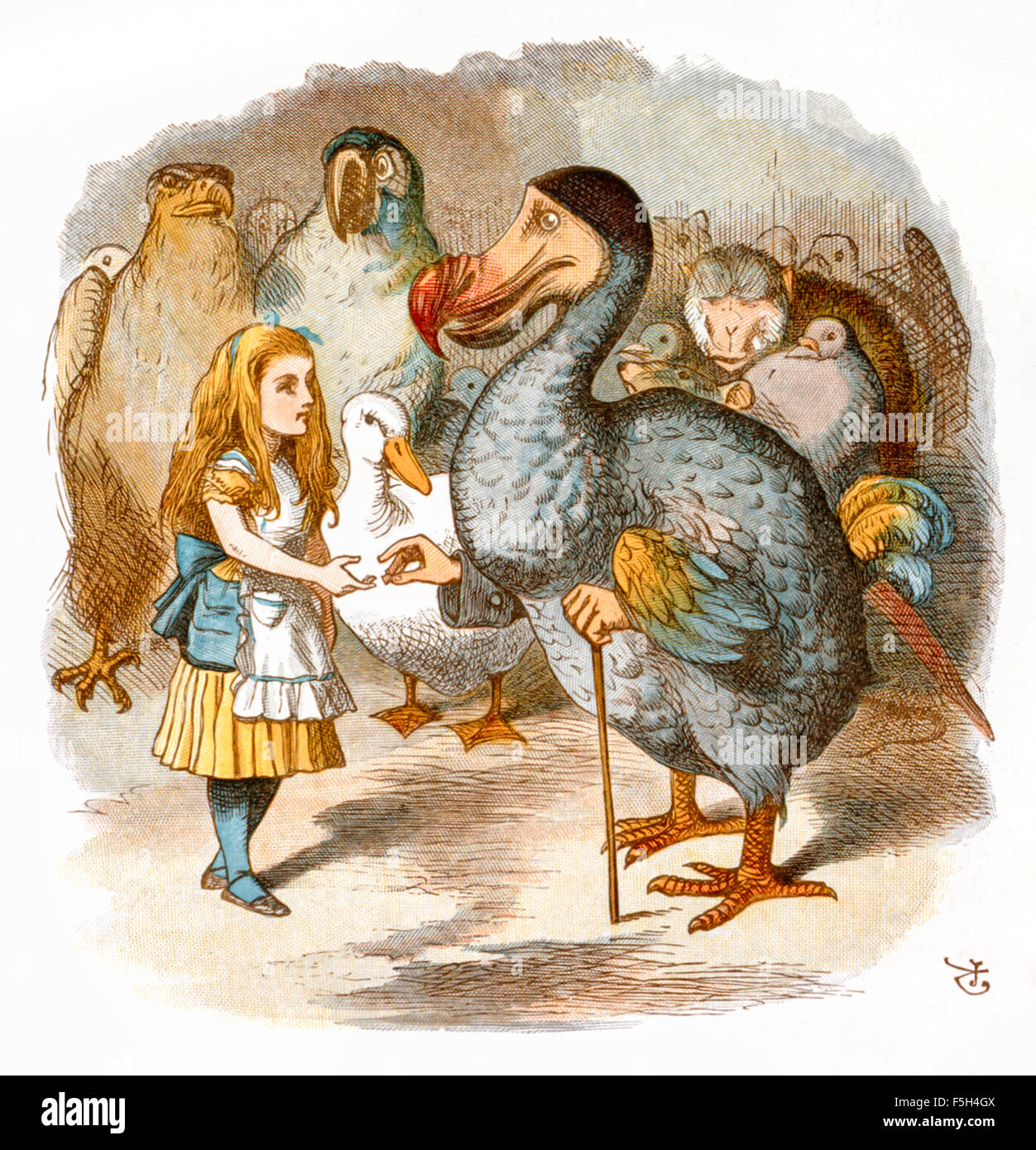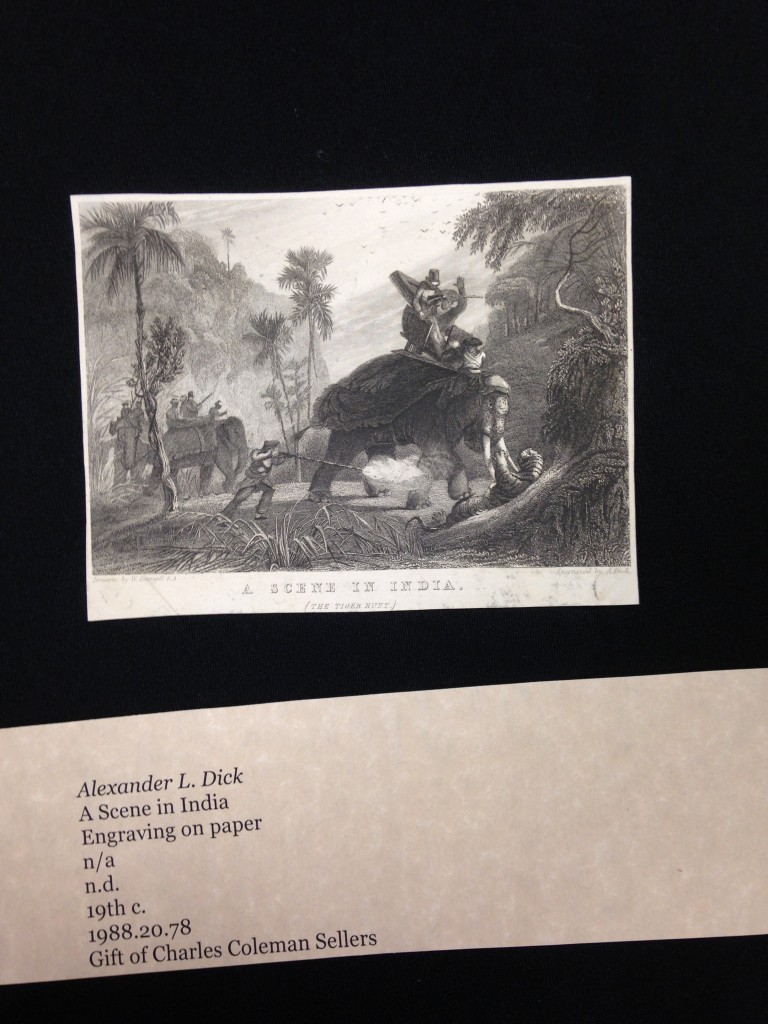

In Alice’s Adventures in Wonderland, Alice plays the role of the traveler through the rabbit hole into a foreign land who, despite speaking the same language as the natives, perpetually finds herself confounded by their alternate interpretations of words and symbols, confusing her cultural expectations. The scene in which Alice is presented the thimble from her own pocket as a prize for having won the race along with all the other animals immediately reminded me of Christopher Columbus’s description of trading with indigenous populations in his “Letter to the Sovereigns, 4 March 1493”: “Everything they have or had they gave for whatever one gave them in exchange, even taking a piece of glass or broken crockery or some such thing, for gold or some other thing of whatever value.” Columbus presents the natives as ignorant and naive because of these trades, which he views as imbalanced. Alice is equally puzzled by the presentation of the thimble, and “thought the whole thing very absurd, but they all looked so grave that she did not dare to laugh; and, as she could not think of anything to say, she simply bowed, and took the thimble, looking as solemn as she could,” (Carroll 20). For her, the ordinary, everyday object of a thimble would not qualify as a prize, but she plays along with the animals’ assumptions just as Columbus does.
These misinterpretations of objects as symbols demonstrate the relative values of objects and therefore the different meanings created based on those values. For Columbus, gold meant wealth because an arbitrary system in his culture had decided it, but for the native Americans, who did not necessarily have a use for gold, it was much less valuable. Therefore, even broken objects which were new and potentially useful like glass would have been seen as more valuable. For Alice, likewise, the animals had perhaps (it’s difficult to tell in a book of animals running around with human objects) never encountered sewing before, and may have therefore seen thimbles as interesting, exotic, and valuable. Each member of the exchange brings with them their distinct ideology, which affects their interpretation of every word of the conversation in a way that is usually not acknowledged except in interactions between different cultures. (This kind of misinterpretation happened over and over again when Columbus was involved, often in ways that were both hilarious and tragic.)
The wordplay and double meanings play a similar role in the books, revealing the types of misunderstandings that occur between groups who encounter each other during colonial conquest. At the same time, this confusion is used to develop the world in which Alice cannot assume anything about standards for politeness (she offends the mouse without meaning to) because none of the standards of her home apply. This sense of constant discomfort and discovery and reevaluation of “normal” that Alice experiences as she tries to converse with the inhabitants of the other world is a part of her broader challenges involved in growing up. When children reach the age in which they are moving beyond the home and their hometown school for the first time, they are forced to confront other cultural expectations and rethink the supposed universality of their own beliefs. Therefore, the use of homophones and misunderstandings plays a double role in the novel, showing both the colonial nature of Alice’s encounters and also creating a space for her to develop as a person of the wider world.
